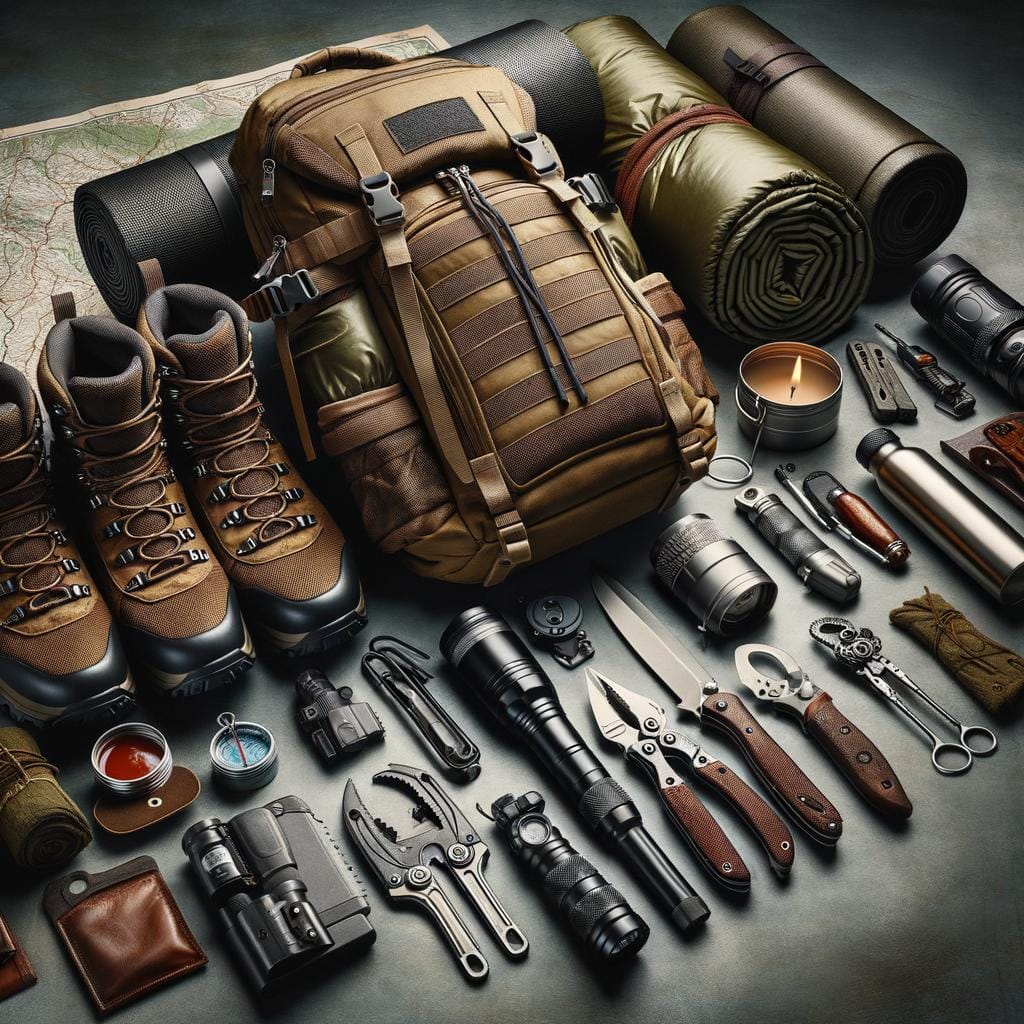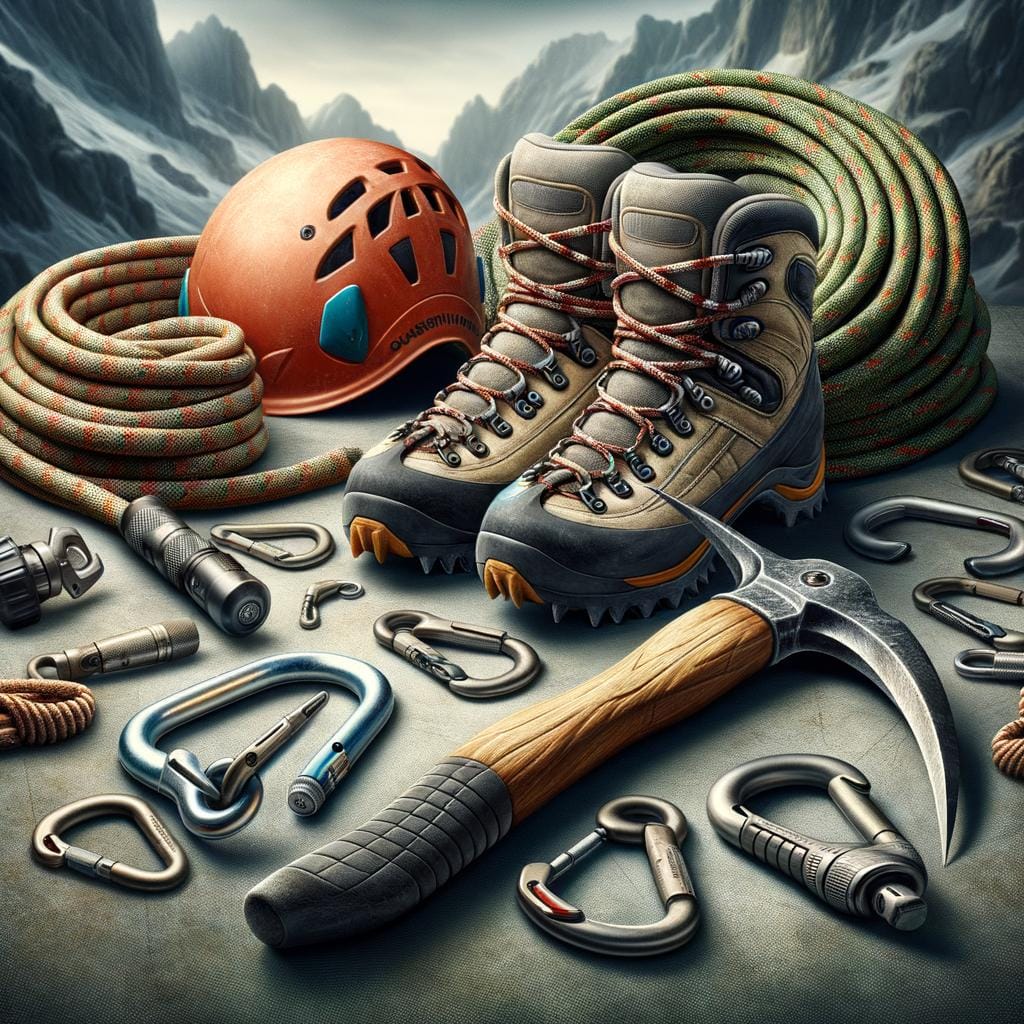Gear testing is a crucial process for outdoor enthusiasts to ensure the reliability and performance of their gear in various conditions. Whether hiking, camping, or engaging in other outdoor activities, having gear that can withstand the elements is essential for a safe and enjoyable experience. By rigorously testing equipment before use, individuals can have confidence in their gear’s quality and dependability when out in the wilderness.
When it comes to gear testing, there are different methods used to assess durability, functionality, and overall performance. From stress tests to field trials, each approach provides valuable insights into how gear will hold up during real-world use. Understanding the nuances of these testing procedures can help outdoor enthusiasts make informed decisions when selecting equipment for their adventures.
In this article, we will delve into the world of gear testing, exploring not only its importance but also the various types of tests used to evaluate outdoor gear. Whether facing extreme weather conditions or rugged terrains, gear must be put through its paces to ensure it meets the demands of outdoor enthusiasts. Follow along as we uncover the benefits of thorough gear testing and provide tips for conducting your own tests effectively.
The Different Types of Gear Testing
Gear testing is a crucial process for outdoor enthusiasts to ensure that their gear performs optimally in various conditions. There are different types of gear testing methods that are employed to assess the durability, functionality, and performance of equipment.
One common method is field testing, where gear is used in real-life outdoor settings to evaluate its performance under actual conditions. This type of testing provides valuable insights into how the gear holds up when subjected to the elements and rough usage.
Another method of gear testing is laboratory testing, which involves controlled experiments in a controlled environment. This type of testing allows for precise measurements and analysis of specific aspects of gear performance, such as tensile strength or water resistance. Additionally, there is also user feedback testing, where outdoor enthusiasts provide input on their experiences with using the gear. This feedback is valuable for manufacturers to understand how their products perform in actual use and make necessary improvements.
Furthermore, durability testing focuses on assessing how well gear withstands wear and tear over time. This type of testing involves subjecting gear to repeated stressors or extreme conditions to simulate long-term use. Functionality testing evaluates how easy it is to use the gear as intended, including features like adjustability or accessibility.
Performance testing measures how well the gear meets expectations in terms of comfort, protection, and overall effectiveness in specific outdoor activities. By utilizing these various types of gear testing methods, outdoor enthusiasts can make informed decisions about their equipment choices for their adventures.
| Gear Testing Method | Description |
|---|---|
| Field Testing | Real-life outdoor settings evaluation |
| Laboratory Testing | Controlled experiments for precise measurements |
| User Feedback Testing | Outdoor enthusiasts provide input on their experiences |
Gear Testing in Extreme Conditions
When conducting gear testing in extreme conditions, experts often use a combination of methodologies to evaluate different aspects of the gear’s performance. Some common methods include immersion testing for waterproofness, impact testing for durability, and thermal stress testing for insulation properties. By subjecting gear to these rigorous tests in real-world scenarios, manufacturers can identify weak points and make necessary improvements before releasing products to the market.
Here are some key considerations for conducting gear testing in extreme conditions:
- Choose the right location: Selecting an appropriate environment that simulates the intended end-use of the gear is essential for accurate testing results.
- Utilize proper equipment: Make sure you have the necessary tools and instruments to measure and record data during the testing process.
- Document everything: Keep detailed records of the testing procedures, conditions, and outcomes to track any issues or patterns that may arise.
By putting outdoor gear through its paces in challenging environments, manufacturers can ensure that their products meet the demands of adventurers worldwide. Whether it’s a high-altitude trek or a winter camping trip, gear that has undergone rigorous testing in extreme conditions gives users peace of mind knowing that they can rely on their equipment when it matters most.
Case Studies
When it comes to outdoor gear testing, real-life case studies provide valuable insights into the effectiveness of different products in various conditions. These tests not only showcase the durability and functionality of gear but also highlight the importance of rigorous testing before relying on equipment during outdoor adventures.
Success Stories
One notable success story in gear testing involves a group of mountaineers who put their climbing ropes to the test on a treacherous expedition. After subjecting the ropes to extreme temperatures, rough terrain, and heavy loads, the gear held up remarkably well, ensuring the safety of the climbers throughout their journey. This successful test not only demonstrated the high quality of the equipment but also underscored the importance of thorough testing before embarking on challenging expeditions.
Lessons Learned
On the other hand, there have been instances where gear testing has revealed vulnerabilities and shortcomings in certain products. For example, a group of hikers discovered that their waterproof jackets failed to withstand heavy rainfall during a trek in a tropical rainforest.
This experience taught them the importance of selecting gear that is specifically designed for specific weather conditions and environments. By sharing these lessons learned from gear testing failures, outdoor enthusiasts can make more informed decisions when choosing their equipment.
Implications for Gear Testing
Overall, case studies play a crucial role in shaping how outdoor enthusiasts approach gear testing. By analyzing both success stories and lessons learned, individuals can gain valuable insights into the performance of different products and make informed decisions when selecting gear for their own adventures. These real-life examples not only showcase the importance of thorough testing but also emphasize the need for continuous innovation and improvement in outdoor gear design.
Tips for Conducting Your Own Gear Testing
Choosing the Right Testing Environment
When conducting gear testing, it is crucial to select the appropriate environment that closely mimics the conditions you will encounter during your outdoor adventures. Whether it’s testing a backpack for hiking or a tent for camping, make sure to test them in environments that match the intended use. For example, if you plan on using your gear in rainy conditions, perform a waterproofing test by spraying water on the fabric to see how well it repels moisture.
Creating a Testing Checklist
To ensure comprehensive and systematic gear testing, develop a detailed checklist of aspects you want to evaluate. This could include factors like durability, comfort, functionality, and performance under specific conditions. By creating a structured checklist, you can track each element effectively and determine whether your gear meets your requirements satisfactorily.
Documenting Your Findings
To conduct effective gear testing, documenting your findings is essential. Keep detailed notes about each test session, including observations about how the gear performs under different scenarios. Take photos or videos to visually capture any wear and tear or malfunctions. This documentation will not only help you assess the gear’s effectiveness but also serve as valuable data when comparing different products or making purchasing decisions in the future.
Benefits of Gear Testing
Gear testing plays a crucial role in ensuring the reliability and performance of outdoor gear before embarking on any adventure. By carefully evaluating the durability, functionality, and overall effectiveness of gear through testing, outdoor enthusiasts can have peace of mind knowing that their equipment is up to the task.
Whether it’s testing hiking boots for grip on slippery terrain or examining the waterproofness of a jacket in a simulated rainstorm, gear testing provides valuable insights that can make all the difference during an outdoor excursion.
One of the key benefits of gear testing is that it helps users identify any potential weaknesses or shortcomings in their equipment before they are out in the field. By proactively conducting thorough tests, individuals can address any issues or concerns, such as weak seams or inadequate insulation, and make necessary adjustments or replacements. This proactive approach not only enhances safety but also increases overall enjoyment by preventing avoidable mishaps during outdoor activities.
Moreover, gear testing allows outdoor enthusiasts to familiarize themselves with their equipment and its capabilities, giving them confidence in their gear choices. It provides an opportunity to fine-tune settings, adjust fit and comfort levels, and optimize performance based on personal preferences and specific needs. Through detailed gear testing processes, individuals can gain valuable insights into how different pieces of gear work together harmoniously to enhance their overall outdoor experience.
| Benefit | Description |
|---|---|
| Reliability | Gear testing ensures that outdoor equipment can be relied upon in various conditions. |
| Safety | Identifying weaknesses in gear helps prevent accidents or issues during outdoor adventures. |
| Confidence | Thoroughly tested gear gives users confidence in their abilities and equipment choices. |
Common Mistakes in Gear Testing
When it comes to gear testing, ensuring accurate and reliable results is crucial for outdoor enthusiasts. However, there are common mistakes that can impact the validity of the testing process. By being aware of these pitfalls and taking steps to avoid them, testers can guarantee that their assessments are truly effective.
To help you steer clear of these errors, here are some common mistakes in gear testing:
- Lack of Clear Objectives: Before conducting any gear testing, it is essential to establish clear objectives. Without defined goals and criteria for evaluation, the testing process can become haphazard and ineffective.
- Inadequate Testing Conditions: One of the key aspects of gear testing is simulating real-world scenarios. If the testing conditions do not accurately reflect the environments in which the gear will be used, the results may not be applicable or reliable.
- Insufficient Sample Size: Testing a single piece of gear may not provide a comprehensive view of its performance. It is important to test multiple samples to account for variations in manufacturing and ensure the reliability of the results.
By avoiding these common mistakes in gear testing, outdoor enthusiasts can conduct thorough and accurate evaluations of their equipment. Through proper planning, attention to detail, and adherence to best practices, testers can maximize the effectiveness of their assessments and make well-informed decisions when selecting gear for their adventures.
Gear Testing Innovations
Gear testing continues to evolve with the latest advancements in technology, shaping the future of outdoor gear for enthusiasts around the world. Innovations in gear testing have revolutionized the way manufacturers evaluate their products, ensuring that they meet the highest standards of durability, functionality, and performance. From advanced materials to cutting-edge testing equipment, the outdoor industry is constantly pushing the boundaries of what is possible in gear testing.
One of the key advancements in gear testing technology is the use of state-of-the-art simulation software. This software allows manufacturers to create virtual models of their gear and test them in a variety of different environments and scenarios.
By simulating extreme conditions and stressors, companies can identify potential weaknesses in their gear before it even goes into production. This not only saves time and money but also ensures that outdoor enthusiasts can trust their gear to perform when they need it most.
In addition to simulation software, advances in materials science have also played a crucial role in improving gear testing processes. Companies are now developing new fabrics, coatings, and construction techniques that enhance the durability and performance of outdoor gear. By integrating these new materials into their products, manufacturers can create gear that is lighter, more breathable, and more weather-resistant than ever before.
As a result, outdoor enthusiasts can push themselves further and explore new environments with confidence, knowing that their gear has been rigorously tested to stand up to the toughest conditions. Gear testing will continue to evolve as technology progresses, ensuring that outdoor adventurers have access to top-of-the-line equipment that allows them to fully enjoy their pursuits while staying safe and comfortable along the way.
Frequently Asked Questions
How Do I Become a Gear Tester?
Becoming a gear tester requires building a strong reputation in the outdoor community, producing quality content, and engaging with brands. It’s important to showcase your expertise, knowledge, and integrity to attract opportunities for testing gear.
How to Get Free Outdoor Gear?
Getting free outdoor gear involves establishing relationships with brands through social media, blogs, or industry events. By creating valuable content and demonstrating a genuine passion for the outdoors, companies may offer you free gear in exchange for reviews or exposure.
Who Is GearLab?
GearLab is a reputable source for unbiased gear reviews and recommendations in the outdoor industry. With a team of experts who rigorously test and evaluate products, GearLab helps consumers make informed decisions when purchasing outdoor gear. Their thorough testing process sets them apart as a trustworthy resource in the outdoor community.

An avid outdoor enthusiast, writer, and environmental advocate who has spent over two decades exploring the world’s most breathtaking landscapes. With a background in environmental science and a passion for adventure, Frances combines her love for nature with her talent for storytelling to inspire others to embark on their own outdoor journeys.





